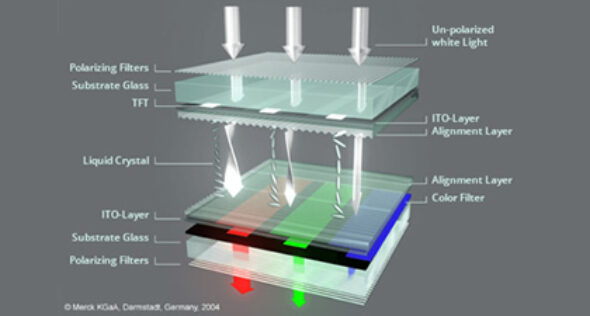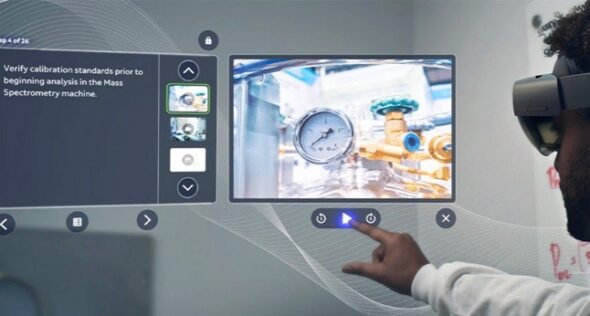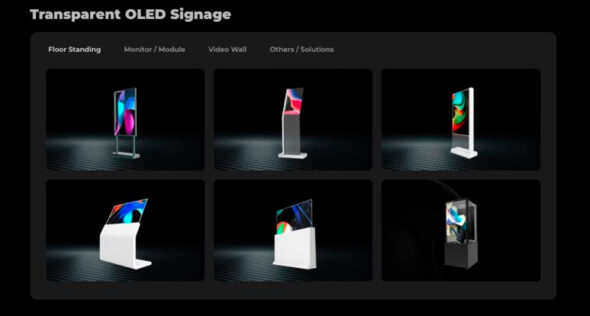The world of displays and monitors is undergoing a profound transformation. Technological progress, combined with new market demands, is redefining the boundaries of the visual experience. From image quality to interactivity and environmental sustainability, every aspect is being reimagined to offer solutions that are increasingly advanced, connected, and intelligent.
1. Advanced display technologies
Fourth-generation OLED
LG has recently introduced next-generation OLED monitors featuring a refresh rate of up to 720 Hz and peak brightness of 1,500 nits, thanks to Tandem OLED technology. This approach, which uses multiple stacked emissive layers, improves overall brightness and lifespan while minimizing the burn-in effect typical of traditional OLEDs.
MicroLED
Seen as the natural evolution of OLED, MicroLED technology combines deep blacks and high contrast with superior brightness and longevity. Each pixel is self-emissive and non-organic, eliminating degradation over time. Costs remain high for now, but in the coming decade it is expected to become the reference standard for premium displays.
QD-OLED
Quantum Dot OLED (QD-OLED) represents a balance between efficiency and color quality, merging the brilliance of Quantum Dots with the contrast and precision of OLED. The result is vivid color reproduction, perfect blacks, and exceptional image uniformity—ideal for professional, creative, and high-fidelity entertainment applications.
2. Ultra-fast and high-resolution monitors
Extreme refresh rates
The latest gaming monitors now reach refresh rates of up to 720 Hz, providing unmatched fluidity. This advancement is crucial in eSports and competitive scenarios, where every millisecond of reaction can determine the outcome of a match.
Higher resolutions
At the same time, 5K and 8K resolutions are becoming increasingly accessible. Professionals in graphics, video editing, and design can rely on exceptional detail and color accuracy that bring the visual experience closer to reality.
3. Immersive and interactive displays
Glasses-free 3D
New autostereoscopic 3D technologies, based on lenticular lenses and eye-tracking, allow users to perceive depth without additional accessories. This opens new opportunities for medical, industrial, and creative fields such as 3D modeling and virtual prototyping.
Foldable and flexible displays
Curved, foldable, and flexible screens are no longer just design concepts but functional tools. They adapt to dynamic workspaces, public installations, or interactive environments, offering engaging visual experiences tailored to each user’s needs.
4. Sustainability and eco-design
The future of displays is not only more powerful but also more responsible.
Eco-compatible materials
Manufacturers are increasingly adopting recyclable materials and low-impact production processes to reduce the overall environmental footprint of electronic devices.
Energy efficiency
Next-generation panels are designed for lower power consumption and better thermal efficiency, reducing operational costs and supporting sustainable development models.
5. Artificial Intelligence and personalization
Automatic optimization
Thanks to advances in integrated AI, displays can now adjust brightness, contrast, and color gamut in real time based on content type, ambient light, and user behavior.
Smart interfaces
The convergence of displays and virtual assistants enables voice interaction, gesture control, and predictive commands, making operation more fluid and intuitive. The monitor is no longer a passive viewing surface but an active, context-aware interface.
6. The future: augmented reality and virtual displays
By 2034, a radical transformation is expected: traditional monitors will gradually give way to virtual displays projected through augmented reality (AR) or mixed reality (MR). These technologies will enable invisible screens, fully customizable and seamlessly integrated into the real environment. Users will be able to arrange multiple work windows or multimedia elements around them and interact through gestures or voice commands. The result will be an ecosystem where physical and digital merge, freeing productivity and entertainment from the material limits of current monitors.
Conclusion
The future of display technology has already begun. These innovations aim not only to improve visual quality but to redefine the very concept of a “screen.” From surface to environment, from viewing to participation, augmented reality stands at the crossroads of technology, creativity, and sustainability. To explore these trends in greater depth or find the most innovative solutions for your projects, the World Trade Display commercial team is available to provide consultation and tailored technical support.






